St Aebbe and Coldingham
St Aebbe, daughter of King Aethelfrith of Bernicia, founded a monastery on the Berwickshire coast sometime around the middle of the 7th century. The site she selected was a fortified settlement on top of a hill overlooking the sea. Its name, in Latin, was Urbs Coludi, ‘Colud’s Fort’. Although we don’t know anything about Colud his name appears to be Celtic so he was probably a native Briton or a local god. Aebbe established a community of monks and nuns on the summit of the hill, no doubt utilising the ramparts of Colud’s Fort as a boundary. Nothing can be seen of her monastery today but the site is still known as Kirk Hill and is part of a dramatic coastal feature called St Abbs Head. Among the impressive cliffs and deep-cloven bays a large number of seabirds make their nests, hence the designation of the entire headland as a nature reserve.
In the early 680s the monastery was accidentally destroyed by fire. By then, Aebbe was already dead and her community had acquired a reputation for sleaze and scandal. After the fire the monks and nuns abandoned Urbs Coludi to join other religious houses where, we may assume, their behaviour improved. At some point in the next two hundred years a new monastery was established slightly inland, at nearby Coldingham, eventually becoming the centre of a cult devoted to St Aebbe. Little is known of its history and it possibly didn’t survive the perils of the Viking period. Whatever its fate, the religious settlement at Coldingham was re-founded in 1098 as a priory of the Benedictine Order to whom the Scottish king Edgar granted the site and surrounding district. In the 14th century a small church, an offshoot from Coldingham, was built on Kirk Hill, on the seaward side of the summit, but it almost certainly fell into disuse when the priory itself was dissolved in the 1600s.
The parish church of Coldingham now occupies part of the Priory site and is still used as a place of worship. Next to it a medieval arch has been reconstructed in the style of the 13th century, partly from old stonework and probably on its original base. On one side of the arch lie the visible foundations of a tower built c.1100, with the inscribed grave-slabs of two priors from the early 1200s placed in the centre. On the other side stands the ‘Lapidarium’, a wall erected in Victorian times using sculptured blocks and other objects unearthed at the site. Among the various interesting items in the Lapidarium are several piscinae or stone basins for washing vessels and vestments used in the Mass. One of these is thought to be a genuine 7th-century relic from St Aebbe’s original monastery on Kirk Hill.
Notes
* More about St Aebbe can be found inthis post by Michelle of Heavenfield
* I haven’t yet looked for detailed information on the ancient piscina so if anyone knows something about it please feel free to add a comment below
* Two useful links: one for the Coldingham village website, the other for the Priory
* Bede wrote about St Aebbe, her monastery at Urbs Coludi and the lax morals of its inhabitants in Book 4, Chapter 25 of his Ecclesiastical History
In the early 680s the monastery was accidentally destroyed by fire. By then, Aebbe was already dead and her community had acquired a reputation for sleaze and scandal. After the fire the monks and nuns abandoned Urbs Coludi to join other religious houses where, we may assume, their behaviour improved. At some point in the next two hundred years a new monastery was established slightly inland, at nearby Coldingham, eventually becoming the centre of a cult devoted to St Aebbe. Little is known of its history and it possibly didn’t survive the perils of the Viking period. Whatever its fate, the religious settlement at Coldingham was re-founded in 1098 as a priory of the Benedictine Order to whom the Scottish king Edgar granted the site and surrounding district. In the 14th century a small church, an offshoot from Coldingham, was built on Kirk Hill, on the seaward side of the summit, but it almost certainly fell into disuse when the priory itself was dissolved in the 1600s.
The parish church of Coldingham now occupies part of the Priory site and is still used as a place of worship. Next to it a medieval arch has been reconstructed in the style of the 13th century, partly from old stonework and probably on its original base. On one side of the arch lie the visible foundations of a tower built c.1100, with the inscribed grave-slabs of two priors from the early 1200s placed in the centre. On the other side stands the ‘Lapidarium’, a wall erected in Victorian times using sculptured blocks and other objects unearthed at the site. Among the various interesting items in the Lapidarium are several piscinae or stone basins for washing vessels and vestments used in the Mass. One of these is thought to be a genuine 7th-century relic from St Aebbe’s original monastery on Kirk Hill.
Notes
* More about St Aebbe can be found inthis post by Michelle of Heavenfield
* I haven’t yet looked for detailed information on the ancient piscina so if anyone knows something about it please feel free to add a comment below
* Two useful links: one for the Coldingham village website, the other for the Priory
* Bede wrote about St Aebbe, her monastery at Urbs Coludi and the lax morals of its inhabitants in Book 4, Chapter 25 of his Ecclesiastical History
Saint Æbbe the Elder (c. 615 – 683) founded monasteries at Ebchester and St Abb's Head nearColdingham in Scotland.
Life
Æbbe was a princess, the daughter of King Æthelfrith of Bernicia and Acha of Deira. Æthelfrith had invaded the neighbouring kingdom of Deira in 604. Assuming the throne, he united Deira with Berniciathus becoming the first king of Northumbria. To cement this claim upon Deira he took the princess Acha of the royal house of Deira as his wife. However, when Æhelfirth had invaded Deira, he deposed prince Edwin, heir to the throne and brother of Acha, who fled into exile.
Edwin took refuge in the court of King Raedwald of East Anglia, and with his support in 616, raised an army against Æthelfrith. In the subsequent battle, Æthelfrith was defeated and killed. Edwin then gained the throne of Northumbria. Edwin on the throne meant Northumbria, was no longer safe for the children of Æthelfrith as they had a potential rival claim to the throne. Therefore when Æbbe was still young she, her mother and brothers fled north to exile in the court of King Domnall Brecc of Dál Riata. It was during this time of exile in western Scotland that she and her brothers were converted to Christianity.
[edit]Abbess
While the sons of Æthelfrith always represented a threat to Edwin, he was finally deposed by an alliance of the Mercian King Penda and the Welsh King Cadwallon. They raised an army againstEdwin and killed him in battle in 633. Eanfrith, eldest son of Æthelfrith, and Æbbe's half-brother, returned as King of Bernicia, however he was double-crossed and murdered by Cadwallon. The year following Æthelfrith's son Oswald returned and drove the invaders from both Bernicia and Deira, thus establishing himself on the throne of Northumbria. He was however defeated and killed in battle, in 642, by Penda of Mercia, and was succeeded as King by his brother Oswiu.
With her brothers on the throne of Northumbria, Æbbe could return from exile and with their support established a monastery at Ebchester and later at urbs Coludi, now known as Kirk Hill at St Abb's Head, latterly evolving into Coldingham Priory. This religious house lasted for about 40 years and was a double separate monastery of both monks and nuns governed by Æbbe. Legend says she became a nun to avoid the attentions of a certain Prince Aidan. However, he refused to give up his suit and it is said that due to her prayers the tide stayed high around Kirk Hill for three days and protected her.
Æbbe was a great teacher and politician, bringing Christianity to the then pagan Angles who had been settling along the east coast of Britain since the 5th century. She educated the ex-queen Ætheldredafirst wife of Ecgfrith, who later after graduating from Æbbe's tutelage established a religious site on which now stands Ely Cathedral.
Her political prowess also proved important in rectifying a dispute between the then King ofNorthumbria, her nephew Ecgfrith, who had succeeded his father Oswui in 670, and the Bishop Wilfrid. The dispute started with Wilfrid's support for Queen Ætheldreda, who wished despite her marriage to preserve her virginity, and to enter a monastery. With his support she had become a nun at Æbbes monastery. The ill feeling in court against Wilfrid continued with Ecgfrith's second wife, Iurmenburh, who became hostile to Wilfrid on account of the vast estates which he had acquired and the way he travelled about with a large armed retinue, like that of a king. This culminated in Wilfrid being imprisoned at Dunbar at Ecgfrith's whim. Thanks to Æbbe's political skills, on a visit by Ecgfrith to the monastery on Kirk hill, she managed to persuade her nephew to release the bishop.
The reality of life in the early Christian establishment was not always strict on sexual piety. Due to the noble background of members of the religious community, the monastery would also have been a place for eating, drinking and entertainment. While Æbbe, herself was noted for her own piety, she had trouble enforcing discipline at the monastery. The monks and nuns thus became very lax and worldly. This leads to one of the most famous miracles surrounding the patron saint of southeast Scotland and northeast England, St. Cuthbert who visited Æbbe's monastery to instruct the community. At nightCuthbert would disappear to bathe and pray in the sea, to stop himself succumbing to temptations of the flesh. Very early one morning, a monk from the monastery spied him praying and singing psalms in the sea and as Cuthbert came ashore, he saw or imagined he saw two otters bound out of the sea and join Cuthbert. The most likely location for this event is Horse Castle bay at the base of the Kirk Hill.
Death
Shortly after the death of Æbbe, and as foretold in prophesy by the monk Adamnan, in 683 the monastery burned down. The monastic site was abandoned, and by the first half of the 8th century, asBede confirms, the site was deserted. The early work of Æbbe in establishing the Christian religion in south east Scotland was not forgotten, and in a book written about c.1200 by the monks of Coldingham, they tell of many pilgrims visiting the Kirk Hill and the spring at Well Mouth, located at the top of the beach now called Horse Castle Bay. St. Æbbes feast day is celebrated on 25 August.
References
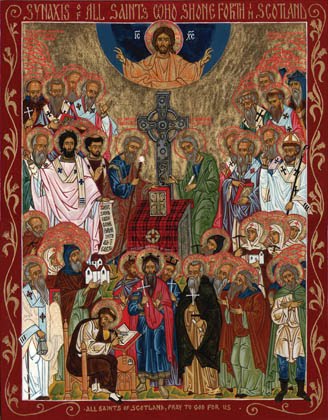
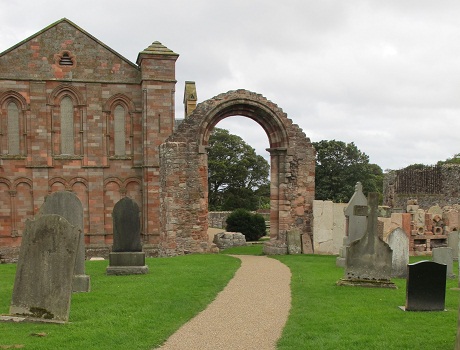
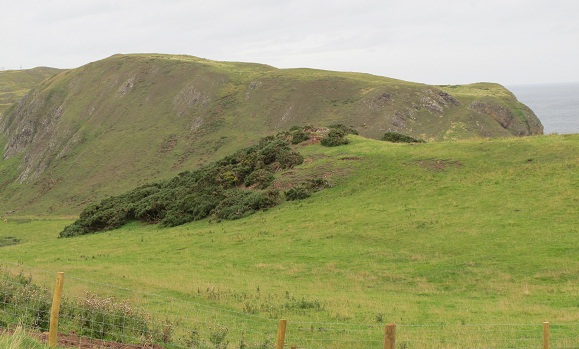
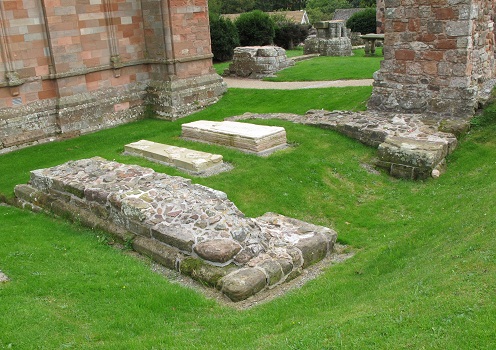
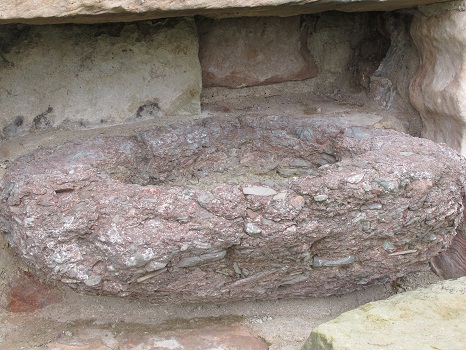
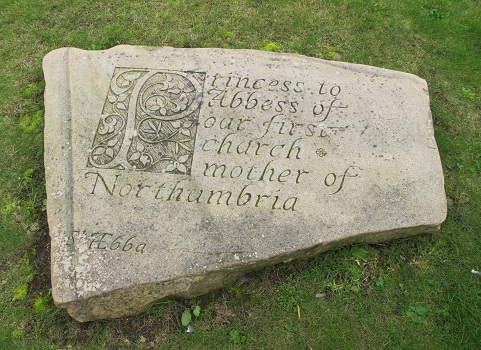
No comments:
Post a Comment